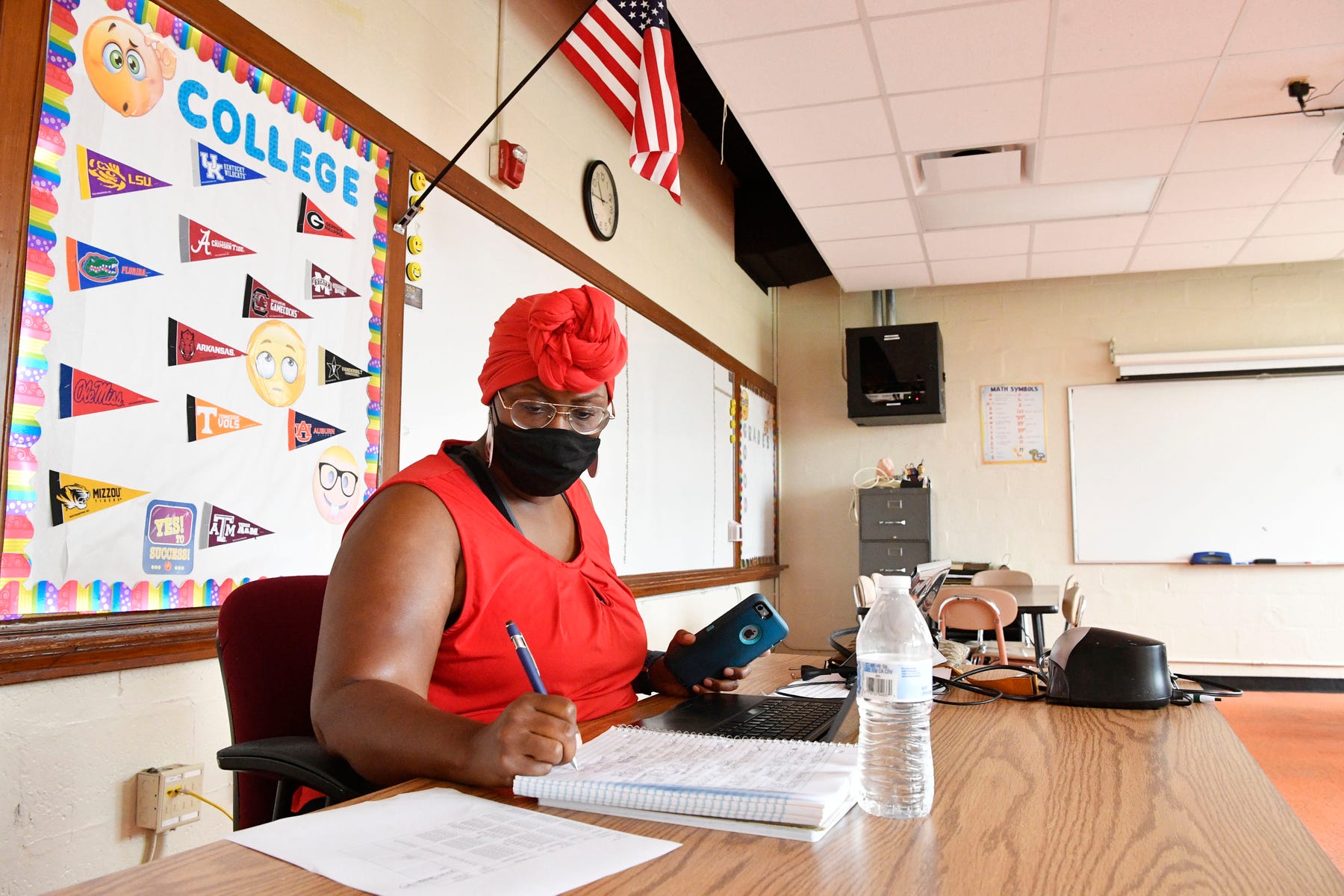Students nationwide are falling behind and teachers are stressed as schools go online. But there’s still no grand plan to improve virtual learning.
MILWAUKEE – Ruby Rodriguez remembers the days when English class meant walking to her desk, talking to friends and checking the board.
Now class begins when her classmates’ names appear online. She sits alone at the dining room table, barefoot and petting the family dog. It’s her freshman year at St. Anthony High School, a private Catholic school in Milwaukee. She doesn’t know what her classmates look like, because nobody ever turns on their cameras.
After schools in Milwaukee went remote last March, Ruby and her friends in eighth grade at St. Anthony’s middle school missed their graduation ceremonies and parties. Her close friends attended different high schools, mostly other private schools that offered in-person instruction. St. Anthony, like many schools in urban areas, including Milwaukee Public Schools, started the fall semester online amid the coronavirus pandemic.
Virtual learning might be keeping Ruby, 14, and her family safer during a public health crisis. But it has made it exponentially harder for her to stay motivated and learn. Her online classes are lecture-heavy, repetitive and devoid of student conversation. Her grades have dropped from A’s and B’s to D’s and F’s. She stays up too late. She sleeps a lot. She misses her friends.
Like millions of students attending school virtually this year, Ruby is floundering academically, socially and emotionally. And as the pandemic heaves into a winter surge, a slew of new reports show alarming numbers of kids falling behind, failing classes or not showing up at all.
For months, experts hoped a return to classrooms would allow teachers to address the lapses in children’s academic and social needs. For many students, that hasn’t happened.
The goalposts are constantly shifting on a return to in-person learning, and about half of U.S. students are attending virtual-only schools. It’s becoming increasingly clear that districts and states need to improve remote instruction and find a way to give individual kids special help online.
At the moment, plans to help students catch up are largely evolving, thin or nonexistent.
The consequences are most dire for low-income and minority children, who are more likely to be learning remotely and less likely to have appropriate technology and home environments for independent study compared with their wealthier peers. Children with disabilities and those learning English have particularly struggled in the absence of in-class instruction. Many of those students were already lagging academically before the pandemic. Now, they’re even further behind – with time running out to meet key academic benchmarks.
In high-poverty schools, 1 in 3 teachers report their students are significantly less prepared for grade-level work this year compared with last year, according to a report by the RAND Corporation, a nonprofit research institution. Class failure rates have skyrocketed in school systems from Fairfax County, Virginia, to Greenville, South Carolina. Fewer kindergarteners met early literacy targets in Washington, D.C., this fall. And math achievement has dropped nationwide, according to a report that examined scores from 4.4 million elementary and middle school students.
“This is not going to be a problem that goes away as soon as the pandemic is over,” said Jimmy Sarakatsannis, leader of education practice at consulting firm McKinsey and Company. He co-wrote a report that estimated the average student could lose five to nine months of learning by June, with students of color losing more than that.
Beyond that, tens of thousands of children are unaccounted for altogether. Hillsborough County, Florida, started the year missing more than 7,000 students. Los Angeles saw kindergarten enrollment drop by about 6,000. There’s scant data about missing students’ progress, of course, but few presume they’re charging ahead academically.
“We almost need a disaster plan for education,” said Sonya Thomas, executive director of Nashville Propel, a community group that works with many Black parents in Tennessee.
The Nashville school system offered some in-person learning in October and November before reverting to all-virtual instruction after Thanksgiving, as COVID-19 cases surged. Some parents say their children are failing every single subject, Thomas said.
Others say they still don’t have digital devices or high-speed internet, or that their children’s special-education learning plans aren’t being followed. One father said his middle school child struggles so much online that he walks out of the house and doesn’t come back until nighttime, Thomas said.
“Our parents are afraid their kids are falling behind, and they don’t know what the solution is,” Thomas said. “They’re looking for leadership. They’re looking for help.”

